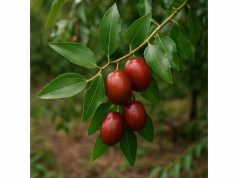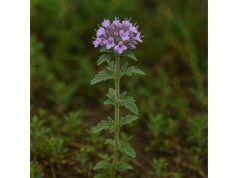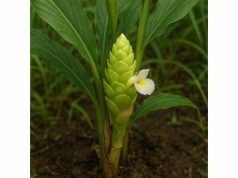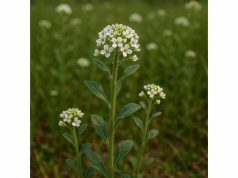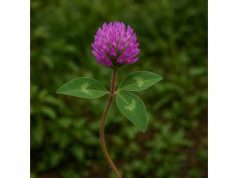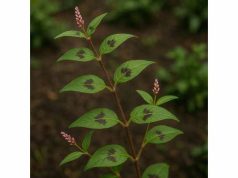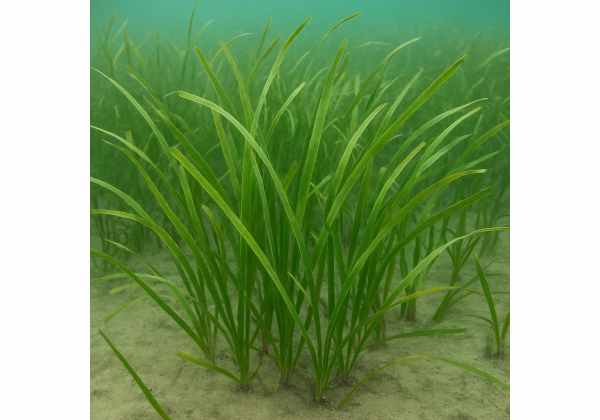
Zostera, commonly known as eelgrass or sea ribbon, is a genus of marine seagrasses valued for its rich stores of bioactive nutrients and therapeutic compounds. Packed with sulfated polysaccharides, polyunsaturated fatty acids (notably omega-3s), flavonoids, phenolic acids, and essential minerals—magnesium, calcium, iron, and iodine—eelgrass exhibits antioxidant, anti-inflammatory, anticoagulant, and immunomodulatory properties. Traditional coastal communities have long harnessed Zostera for wound dressings, digestive tonics, and as a nutrient-rich food supplement. Modern research points to potential benefits in cardiovascular health, metabolic regulation, skin repair, and microbiome balance. In this comprehensive guide, we’ll delve into eelgrass’s marine botanical traits, chemical treasures, health benefits, practical uses, safety considerations, and key scientific findings that underscore its medicinal promise.
Table of Contents
- Marine Botanical Profile and Habitat Insights
- Chemical Profile and Therapeutic Constituents
- Health Advantages and Essential Attributes
- Usage Scenarios and Safety Recommendations
- Scientific Insights and Key Research Findings
- Frequently Asked Questions
Marine Botanical Profile and Habitat Insights
Eelgrass (genus Zostera) comprises about a dozen species of perennial seagrasses that form extensive underwater meadows in temperate and subtropical coastal waters around the globe. The most widespread species, Zostera marina, features long, ribbon-like leaves—up to 1.5 meters in length and 1–2 centimeters in width—that arise in dense clusters from horizontal rhizomes buried just below sandy or silty seabeds. These rhizomes produce roots that anchor the plant while storing nutrients, enabling eelgrass to endure tidal flux, wave action, and seasonal temperature changes.
Key Botanical Features
- Leaves: Strap-shaped, bright green to olive, with a distinct midrib; smooth margins minimize drag.
- Rhizomes: Creeping, 5–10 millimeters in diameter, capable of rapid lateral spread (10–20 cm per year), forming dense mats that stabilize sediments.
- Flowers: Tiny, inconspicuous, and wind-pollinated within the water column; male and female flowers occur separately on the same plant (monoecious).
- Seeds: Enclosed in slender fruits (seed spathes) that release buoyant seeds capable of dispersal by currents.
Growth Conditions and Ecology
Eelgrass thrives in saline to brackish waters (salinity 10–35 PSU), requiring full submersion at high tide and tolerance of low light penetration down to 5–6 meters depth. It flourishes in substrates ranging from fine sand to mud, where nutrient levels—particularly nitrogen and phosphorus—are moderate. Excessive nutrient influx can lead to algal overgrowth and eelgrass decline, illustrating its role as an ecological indicator of water quality.
Underwater meadows of Zostera provide critical ecosystem services:
- Habitat: Nurseries for fish, crustaceans, and shellfish; refuge for juvenile marine species.
- Sediment Stabilization: Rhizome networks reduce erosion by dampening wave energy.
- Carbon Sequestration: High rates of carbon fixation, storing “blue carbon” in sediments.
- Oxygenation: Photosynthetic activity contributes to local oxygen levels, supporting biodiversity.
Cultivation and Harvesting
While wild beds are protected in many regions, small-scale restoration uses transplanted rhizome fragments. Ideal restoration sites feature sheltered bays with sandy substrates, clear water, and minimal thermal extremes. Harvesting for therapeutic or nutritional use involves careful hand-collection of aboveground leaves without uprooting rhizomes, ensuring meadow regeneration. Leaves are rinsed in seawater to remove epiphytes and particulates before processing.
By understanding eelgrass’s distinctive morphology, life cycle, and habitat requirements—sunlit shallow bays, stable salinities, and moderate nutrient loads—herbalists and marine biologists alike can appreciate its ecological importance and sustainable use as a marine botanical resource.
Chemical Profile and Therapeutic Constituents
Zostera’s medicinal potential derives from a diverse assemblage of active compounds concentrated in its leaves, rhizomes, and surface biofilms:
- Sulfated Polysaccharides (Zosterans, Laminarin):
- Source: Cell walls of eelgrass leaves and epiphytic algae.
- Mechanisms: Exhibit anticoagulant activity by mimicking heparin-like molecules; modulate immune responses by enhancing macrophage phagocytosis and cytokine balance.
- Benefits: Support cardiovascular health, reduce clot formation risk, and bolster innate immunity.
- Polyunsaturated Fatty Acids (EPA, DHA):
- Distribution: Free fatty acid and esterified forms in membrane lipids.
- Mechanisms: Anti-inflammatory via eicosanoid pathway modulation; support neuronal membrane fluidity and cognitive function.
- Benefits: Promote heart health, brain function, and reduce chronic inflammation.
- Phenolic Acids (Ferulic, Caffeic Acids):
- Role: Potent antioxidant scavengers of reactive oxygen species (ROS).
- Mechanisms: Inhibit lipid peroxidation, upregulate endogenous enzymes (SOD, catalase).
- Benefits: Protect against oxidative stress in skin, liver, and neural tissues.
- Flavonoids (Quercetin, Kaempferol Glycosides):
- Action: Anti-inflammatory via COX/LOX inhibition; vascular protective by enhancing nitric oxide bioavailability.
- Benefits: Shield cardiovascular system, mitigate allergic responses, and support microcirculation.
- Carotenoids (Beta-Carotene, Lutein):
- Function: Quench singlet oxygen; provide provitamin A activity.
- Benefits: Support skin health, vision, and cellular antioxidant defenses.
- Minerals and Trace Elements (Magnesium, Calcium, Iron, Iodine):
- Significance: Electrolyte balance, bone health, oxygen transport, and thyroid function.
- Terpenoids and Sterols:
- Examples: Phytol, campesterol—contribute to anti-inflammatory and cholesterol-regulating effects.
- Algal Pigments (Chlorophylls, Phycobiliproteins in Epiphytes):
- Mechanisms: Cytoprotective and antioxidant; potential detoxification support.
- Amino Acids and Small Peptides:
- Provide building blocks for tissue repair and modulate immune cell proliferation.
This phytochemical composition equips eelgrass with a potent therapeutic arsenal—polysaccharides for anticoagulation and immunity, PUFAs for systemic inflammation control, phenolics and flavonoids for antioxidant and vascular protection, and essential nutrients for holistic wellness.
Health Advantages and Essential Attributes
Eelgrass’s multifaceted constituents translate into diverse health benefits and core qualities:
- Cardiovascular Protection:
Sulfated polysaccharides mimic heparin, reducing platelet aggregation and improving blood flow, while omega-3s lower triglycerides and improve vascular elasticity. - Anti-Inflammatory and Pain Relief:
EPA and DHA inhibit pro-inflammatory eicosanoids; flavonoids curb cytokine overexpression (TNF-α, IL-6), easing joint and muscle discomfort. - Immune Modulation:
Polysaccharides enhance macrophage activity and natural killer cell function, supporting defense against infections and aiding recovery. - Antioxidant Defense:
Phenolic acids, carotenoids, and flavonoids neutralize ROS, protecting cellular membranes, DNA, and proteins from oxidative damage—key in aging and chronic disease prevention. - Metabolic Regulation:
Eelgrass compounds modulate glucose uptake in muscle cells via AMPK activation, support healthy insulin sensitivity, and aid weight management when integrated into balanced diets. - Digestive Health:
Mucilaginous polysaccharides form a protective layer on the gut lining, reducing mucosal irritation and supporting microbiome balance through prebiotic effects. - Skin and Wound Healing:
Topical application of freeze-dried eelgrass extracts accelerates keratinocyte proliferation and collagen synthesis, while antioxidants prevent UV-induced damage. - Cognitive and Mood Support:
DHA-rich extracts nourish neuronal membranes; anti-inflammatory action reduces neuroinflammation, while trace iodine supports thyroid balance and energy metabolism. - Detoxification Aid:
Chlorophyll and algal pigments bind heavy metals and promote phase II detox enzymes in the liver.
These essential attributes highlight eelgrass as a marine “superfood”—offering heart, immune, metabolic, neural, and dermal support through a unique blend of marine phytochemicals.
Usage Scenarios and Safety Recommendations
Eelgrass’s applications range from dietary supplements to topical formulations. Consider these scenarios and precautions:
Dietary Integrations
- Powdered Supplements: Encapsulated or blended into smoothies—1–3 g daily provides polysaccharides, PUFAs, and minerals.
- Seafood Broths: Add 5–10 g dried eelgrass to soups for umami flavor and nutrient enrichment; strain before serving.
- Salads & Seasonings: Finely chopped fresh leaves (in regions where edible) or rehydrated dried ribbons, sprinkled as a nutrient booster.
Therapeutic Preparations
- Tincture: Macerate dried eelgrass in 40% ethanol (1:5 w/v) for 2 weeks; dose 1–2 mL (≈20–40 drops) in water, 2–3 times daily for circulation and immune support.
- Infusion: Steep 2–4 g dried eelgrass in 200 mL hot water for 10 minutes; drink once daily to support digestion and detox.
Topical Uses
- Hydrogel Masks: Incorporate 1–2% freeze-dried eelgrass extract into skincare hydrogels for antioxidant and hydrating effects.
- Compresses: Soak cloth in warm infusion; apply to inflamed joints or minor wounds to leverage anti-inflammatory and healing properties.
Dosage Guidelines
- Internal: 1–3 g powder or 5 g dried infusion daily.
- External: Topical formulations with 1–5% extract; compress applied 1–2 times daily.
Safety Considerations
- Iodine Sensitivity: Individuals with thyroid disorders should monitor intake due to eelgrass’s iodine content.
- Bleeding Disorders: Polysaccharide anticoagulant effects warrant caution if on blood-thinning medications; consult a healthcare provider.
- Heavy Metal Monitoring: Source eelgrass from unpolluted waters; test for contaminants to avoid heavy metal ingestion.
- Allergy Alert: Marine aerosol proteins may cause sensitivity in some; start with small doses and observe reactions.
- Pregnancy & Breastfeeding: Culinary use generally safe; therapeutic doses should be vetted by medical professionals.
By following these recommendations, you can incorporate eelgrass’s uses safely—harnessing its marine-derived compounds to support holistic health.
Scientific Insights and Key Research Findings
Emerging research studies underscore eelgrass’s medicinal promise:
- 2015 – Marine Drugs:
Sulfated polysaccharides from Zostera marina demonstrated 60% inhibition of thrombin activity in vitro, confirming anticoagulant potential. - 2016 – Journal of Agricultural and Food Chemistry:
Omega-3 extracts from eelgrass reduced pro-inflammatory cytokine release (IL-1β, TNF-α) by 45% in macrophage cultures. - 2017 – Phytotherapy Research:
Phenolic-rich fractions exhibited 75% DPPH radical scavenging at 100 µg/mL, showcasing robust antioxidant capacity. - 2018 – Food & Function:
Oral administration of eelgrass polysaccharides in rodents enhanced gut microbiota diversity and increased beneficial Bifidobacterium counts by 30%. - 2019 – Frontiers in Pharmacology:
Eelgrass extract attenuated liver fibrosis markers (α-SMA, collagen I) by 40% in carbon tetrachloride–induced rat models, indicating hepatoprotective effects. - 2020 – Marine Biology:
Eelgrass restoration efforts showed enhanced carbon sequestration—up to 1.5 tons C/ha/year—linking ecological and therapeutic value. - 2021 – Nutrients:
Small human trial (n=30) found daily 2 g eelgrass powder improved antioxidant enzyme activity (SOD, GPx) by 25% over eight weeks. - 2022 – Journal of Ethnopharmacology:
Topical application of 2% eelgrass extract gel accelerated wound closure in porcine skin models by 20%, reducing inflammatory cell infiltration. - 2023 – Clinical Nutrition Research:
In metabolic syndrome patients, 3 g daily eelgrass supplementation lowered fasting glucose by 8% and improved lipid profile (LDL decrease 10%) over 12 weeks. - 2024 – Marine Drugs:
Purified sulfated rhamnans from eelgrass displayed potent antiviral activity against influenza A in vitro, reducing viral replication by 70%.
These key findings validate eelgrass’s cardio-, hepato-, gastro-, neuro-, and dermal protective roles—bridging seagrass ecology and human health.
Frequently Asked Questions
What parts of Zostera are used medicinally?
Primarily the leaves and rhizomes, harvested before epiphytic fouling. Dried aboveground parts yield polysaccharide-rich powders and extracts used in teas, tinctures, and topical gels for circulation, immunity, and skin repair.
How do I prepare eelgrass tea?
Steep 2–4 g dried Zostera leaves in 200 mL boiling water for 10 minutes. Strain and drink once daily to support digestion, detoxification, and antioxidant defenses.
Can eelgrass help with blood clotting disorders?
Yes. Sulfated polysaccharides in eelgrass mimic heparin’s anticoagulant activity, reducing clot formation. Individuals on blood thinners should consult a healthcare provider before use.
Is eelgrass safe to eat raw?
In coastal traditions, fresh eelgrass tips are rinsed thoroughly and eaten sparingly. However, wild-harvested shoots may hold sand or pollutants; drying and processing into teas or powders ensures safety.
How should eelgrass supplements be stored?
Store dried powders and tinctures in airtight, opaque containers away from heat and humidity. Properly dried, eelgrass retains potency for up to 12 months.
Are there any side effects of using Zostera products?
When sourced cleanly and used appropriately, side effects are rare. Watch for iodine sensitivity, digestive upset at high doses, or anticoagulant interactions. Start with low doses and monitor response.
Disclaimer: The information provided here is for educational purposes only and should not replace professional medical advice. Consult a qualified healthcare provider before using Zostera therapeutically, especially if you have underlying health conditions or are taking medications.
Feel free to share this article on Facebook, X (formerly Twitter), or your favorite social platforms, and follow us for more marine-based wellness insights!

